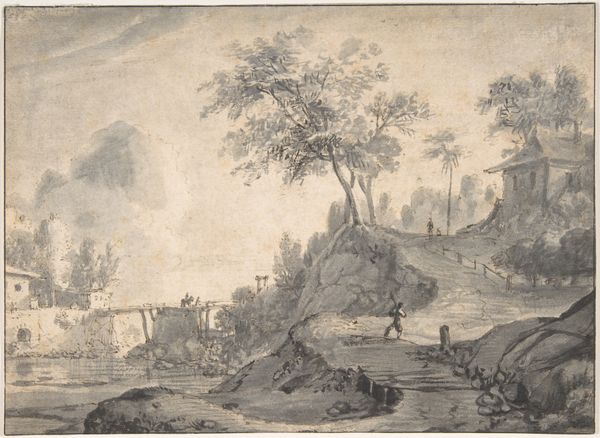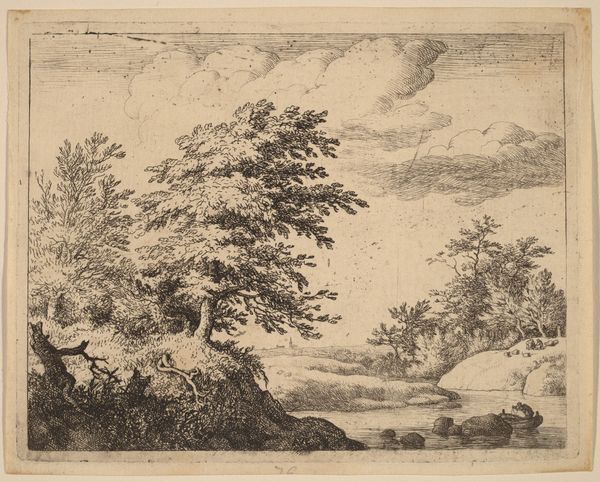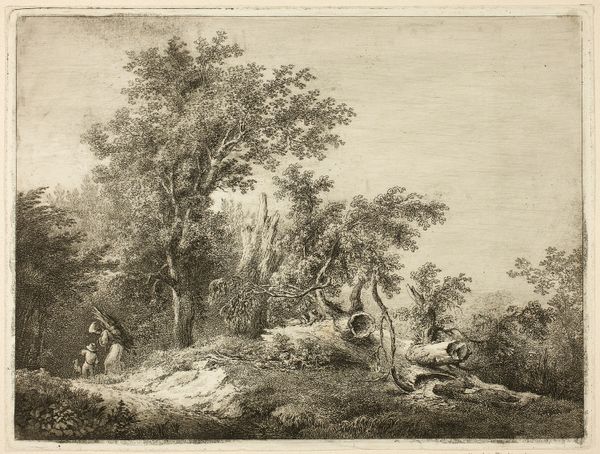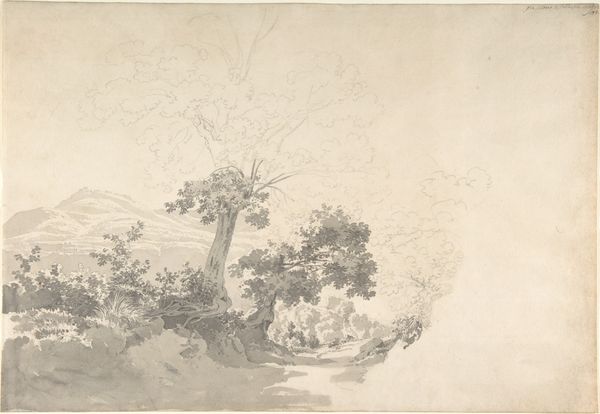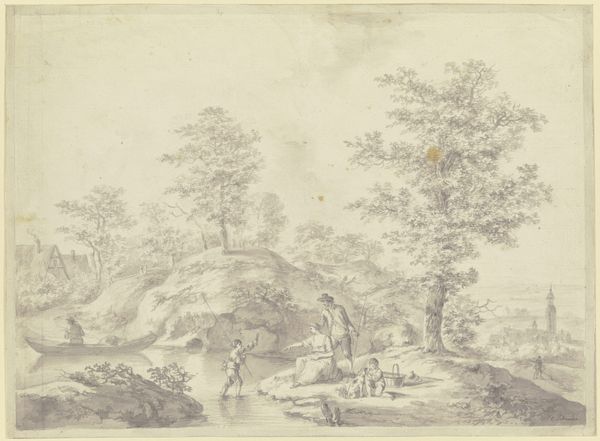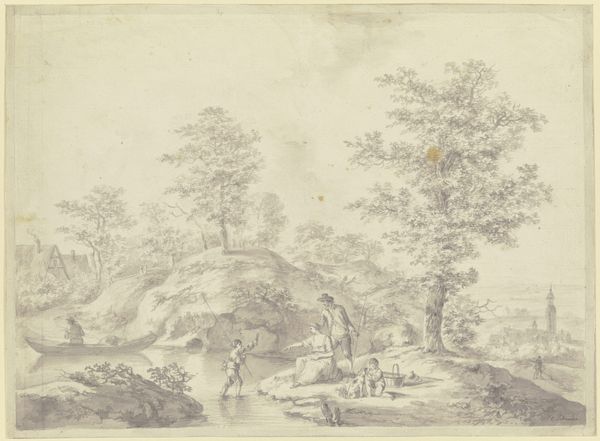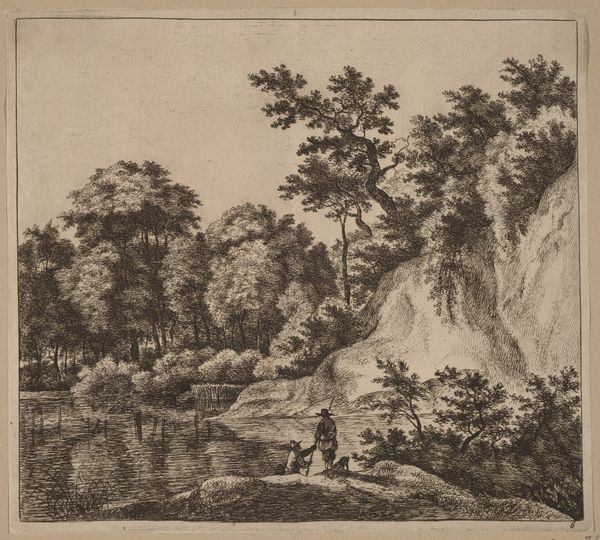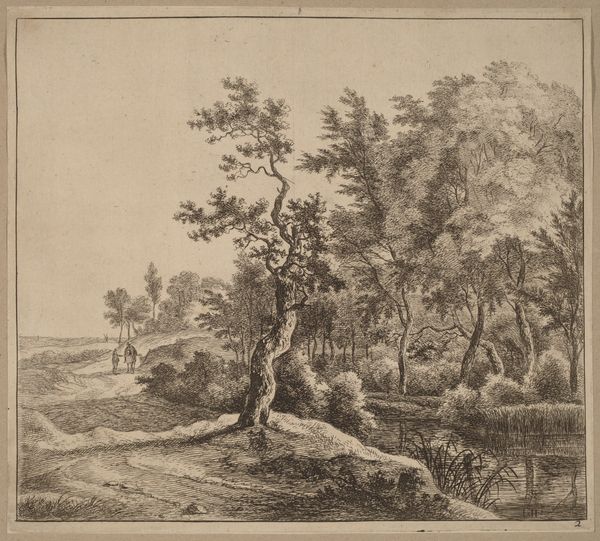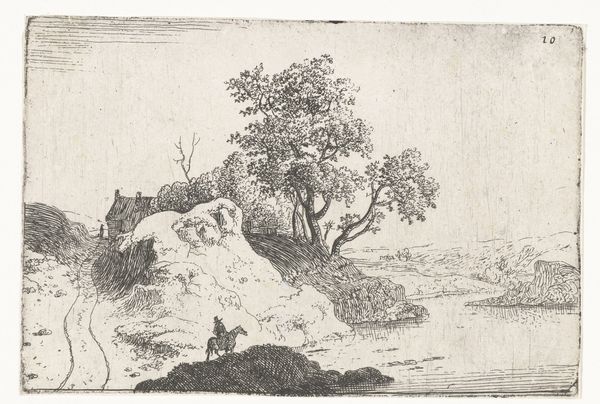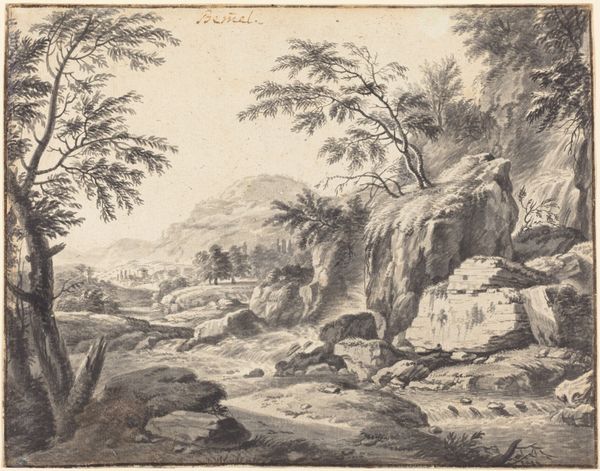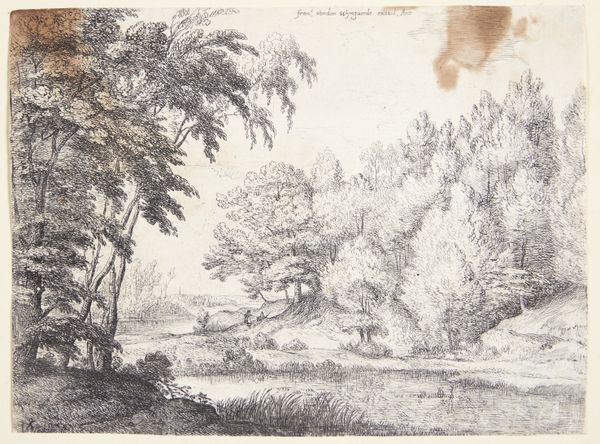
drawing, paper, ink, chalk, graphite
#
drawing
#
pencil sketch
#
landscape
#
paper
#
ink
#
chalk
#
graphite
Dimensions: 164 × 187 mm
Copyright: Public Domain
Curator: Here we have “Landscape with Tree on Road to Buildings,” a drawing of unknown date attributed to Jacob van Ruisdael. Editor: The overall feeling I get is serenity—a sort of hushed, contemplative space captured with deceptively simple materials. It’s really monochromatic: shades of gray, achieved with ink, chalk, and graphite, if I’m not mistaken? Curator: You are correct! Van Ruisdael employs graphite, chalk, and ink on paper to achieve this delicate balance of light and shadow. The drawing focuses, as the title indicates, on a tree centrally positioned along a road leading towards some buildings. Now, I’m curious about the symbolic implications here… the road as a metaphor for life’s journey, perhaps, or the tree representing resilience? Editor: The labor behind it intrigues me as well. To get such a range of tones and textures using relatively simple materials, and on paper—it speaks to the artist's meticulous, almost scientific engagement with his craft. The layering, the subtle blending...it’s a craftsperson's touch. I bet that tree on the road leading toward the buildings had great value in trading in this region. Curator: That’s an interesting perspective. But what of the almost ghostly buildings in the background? Do they not speak of transience, of the ephemeral nature of human creation set against the permanence of nature? Or are you not affected by this somber tonality that anticipates the themes found later in Romanticism? Editor: I’m not disregarding those buildings at all. I see how the materiality of the drawing process itself creates the very sense of temporality that you mention! The smudging, the delicate lines…it reminds us that even landscapes, seemingly permanent, are subject to erosion, to change, much like the drawing could easily be smudged or fade. I believe these marks refer to daily experience instead of great symbolic themes. Curator: I see your point, the inherent fragility mirrors the scene itself! A rather compelling idea. I wonder then about how its creation intersects with cultural memory: evoking feelings tied to the pastoral, a longing for a perhaps idealized rural past? Editor: Well, thinking about that rural past as it relates to the materials employed here--were these readily available locally? Imported? Understanding their trade and production illuminates, too, how landscapes were consumed, experienced, and turned into commodities. I imagine the transport itself affected the symbolic representation. Curator: So, viewing it as an active exchange between nature and commerce, as much as aesthetic rendering? I appreciate how that adds another dimension! Editor: Exactly! Art as product, landscape as both lived space and traded space. I think that Van Ruisdael reveals the ways that social experience affects cultural value in all forms of representation. Curator: This really enriches the whole experience; you have opened me up to considering aspects of social and historical context of material beyond simply aesthetics, and how Van Ruisdael uses a tree for that! Editor: Likewise! Reflecting on both labor and symbolism grants deeper understanding into not just the art object but human endeavor, in its own material terms.
Comments
No comments
Be the first to comment and join the conversation on the ultimate creative platform.
